How to Grow Pansies
Pansies are versatile flowers that thrive in cooler weather, making them a popular choice for gardeners who want vibrant colors in their gardens year-round. In this guide, you will learn how to grow pansies, take care of them, and enjoy their beautiful blooms.
Choosing the Right Pansy Varieties
There are many pansy varieties to choose from, depending on the climate and space in your garden. Some of the best options include:
- Winter-flowering pansies: Ideal for cooler climates, offering blooms even in colder months.
- Trailing pansies: Perfect for hanging baskets or window boxes.
- Giant pansies: Known for their larger blooms and striking appearance.
Choosing the right pansy varieties helps ensure that your garden will be full of colorful flowers.
For more tips on soil preparation, check out how to grow rosemary.
How to Plant Pansies
Pansies can be grown from seeds or purchased as young plants. Here’s how to get started:
- Timing: Pansies prefer cooler weather, so it’s best to plant them in the early spring or fall.
- Soil: These flowers thrive in well-drained, rich soil with a slightly acidic pH (6.0-6.2).
- Planting depth: Plant pansy seeds 1/8 inch deep or transplant young plants so their root ball is level with the soil surface.
- Spacing: Space plants 6-12 inches apart to allow airflow and avoid overcrowding, which can lead to disease.
These simple steps will help you get your pansy plants off to a good start.
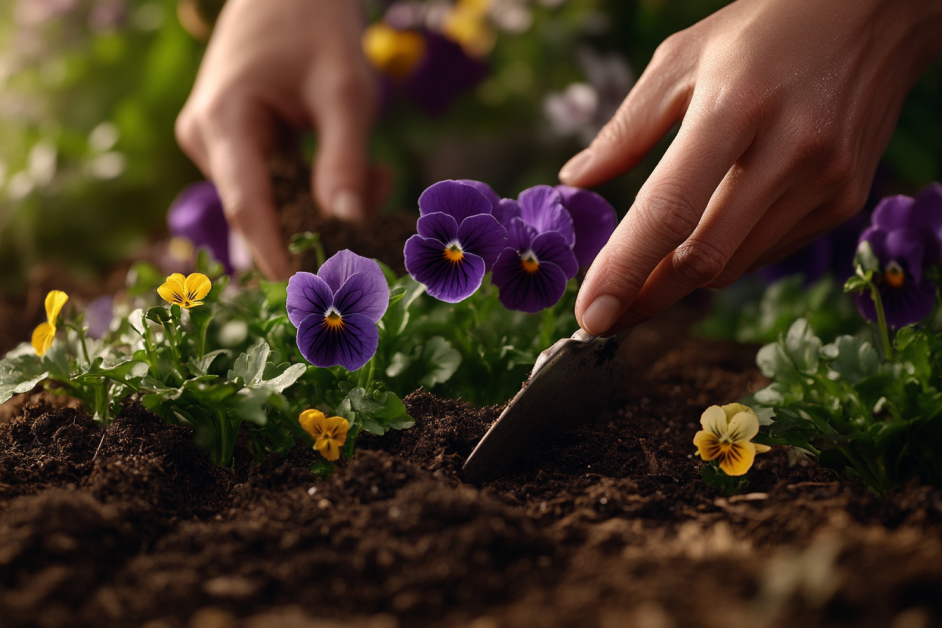
Caring for Pansies
Caring for pansies involves regular watering, feeding, and pruning. Here’s what you need to know:
- Watering: Pansies need about an inch of water per week. Be careful not to overwater, as soggy soil can lead to root rot.
- Feeding: Use a balanced fertilizer (10-10-10) every two weeks to encourage strong blooms.
- Pruning/Deadheading: Regularly remove faded flowers (deadheading) to encourage more blooms and prevent the plant from going to seed.
- Mulching: Adding a layer of mulch helps to retain moisture and protect the roots during colder weather.
Learn more about plant feeding from this gardening guide on using fertilizers.
With proper care, your pansies will thrive and produce vibrant blooms throughout the growing season.

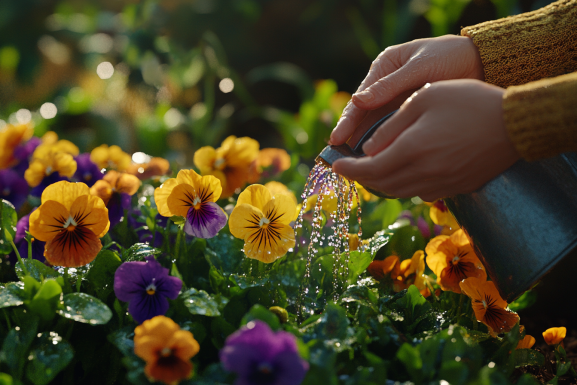
Common Pansy Problems and Solutions
Pansies are relatively easy to care for, but they can suffer from a few common issues:
- Leggy growth: This can happen if pansies don’t get enough sunlight. Move them to a sunnier spot.
- Pests: Watch out for aphids and slugs. Use organic insecticidal soap for aphids and slug traps to protect your pansies.
- Diseases: Pansies are prone to fungal diseases, especially in damp conditions. Avoid watering the leaves, and ensure proper spacing for airflow.
For more pest management tips, see how to grow tomatoes and handle common problems.
By addressing these issues early, you’ll keep your pansy plants healthy.
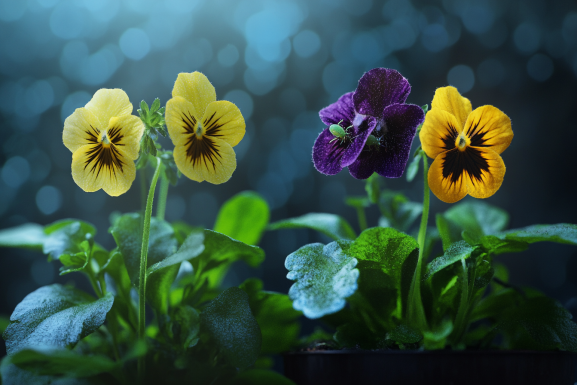
Propagating Pansies
If you want to expand your pansy collection, propagating them is an excellent option. The easiest method is through seed collection.
- Seed Collection: Once the blooms fade, collect the seeds from the pods that form after flowering.
- Storing Seeds: Store seeds in a cool, dry place for planting next season.
- Propagation by Division: Some pansies can be divided in the spring or fall for replanting in other areas of your garden.
Expanding your garden with pansy propagation is a cost-effective and rewarding method.
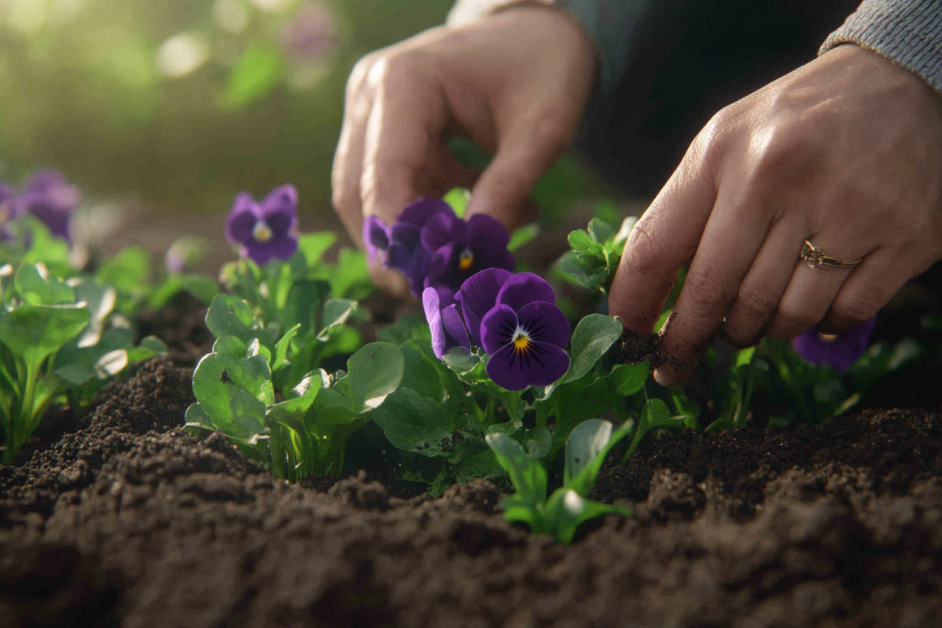
Pansy Varieties to Grow
Here are some of the most popular pansy varieties you can grow in your garden:
- ‘Matrix Morpheus’: Known for its blue and yellow blooms, this variety is eye-catching and hardy.
- ‘Cool Wave’: A trailing pansy that’s perfect for hanging baskets, offering cascading blooms.
- ‘Delta Pure Red’: With its striking red color, this variety is great for adding vibrant color to any garden.
Explore these pansy varieties to find the best match for your garden’s needs.
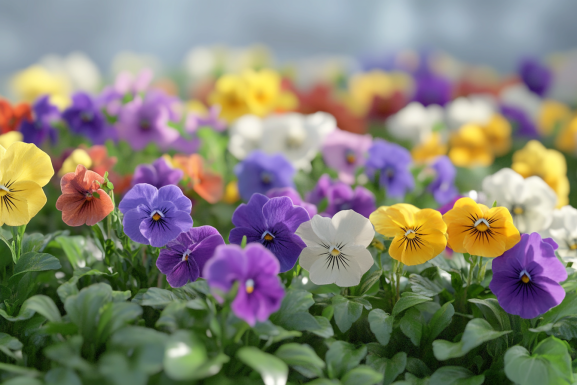
Tips for Growing Pansies in Containers
Pansies are ideal for container gardening and can thrive in pots, window boxes, or hanging baskets. Here’s how to ensure success:
- Choose the right container: Use a pot with drainage holes to prevent waterlogging.
- Use quality potting mix: Ensure the mix is rich in organic matter and drains well.
- Regular feeding: Pansies in containers may need more frequent feeding, as nutrients leach out with watering.
Pansies in containers can brighten up patios, balconies, and small garden spaces.

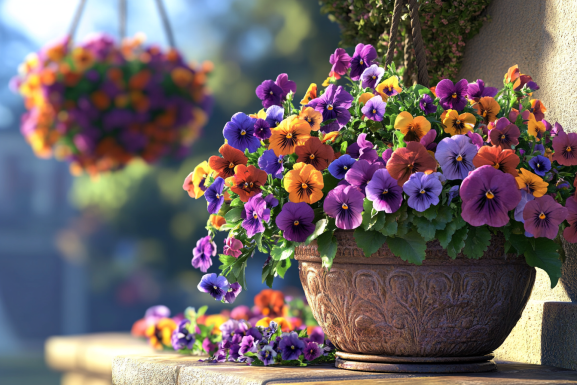
Harvesting Pansy Blooms
Pansies are edible and can be used to decorate dishes or add color to salads. Here’s how to harvest them:
- Harvest in the morning: Pick flowers when they’re fully open but before the sun is at its hottest.
- Use clean scissors: Snip the stem just below the bloom, being careful not to damage the plant.
Harvesting pansy flowers adds beauty not only to your garden but also to your meals.
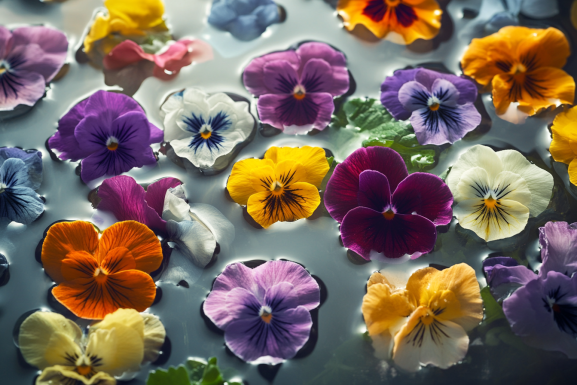
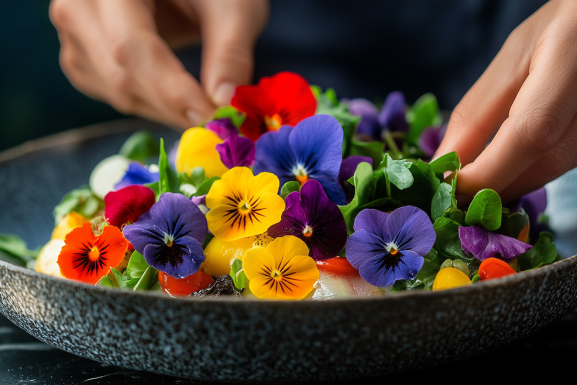
Final Thoughts
By following these tips, you can enjoy growing pansies in your garden or containers year-round. Whether you’re a beginner or an experienced gardener, learning how to grow pansies is a rewarding way to brighten up your space.
#Happy Gardening!

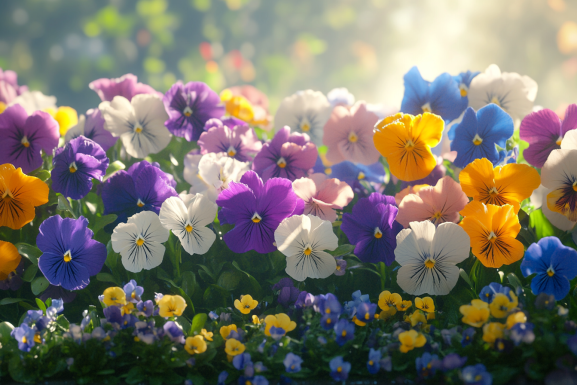
1 thought on “How to Grow Pansies: A Complete Guide for Vibrant Blooms”